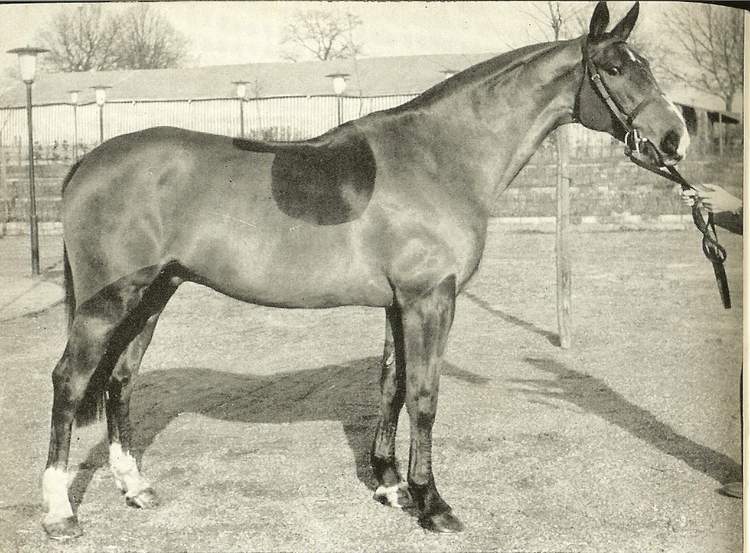

Anglo-Norman


Introduction: If you have any comments or suggestions, please click here. The picture on the right above is apparently of the first horse of this breed of modern times; the one on the left is a typical Anglo-Norman gelding (I believe he is turned out in a hunter clip; someone correct me if I'm wrong on this).
Names: Anglo-Norman, Anglo Norman; I usually hyphenate names like this. In this case "Anglo" simply means English, not necessarily Thoroughbred; "Norman" refers to the Normans from France.
Origin:
The Anglo-Norman originated from a systematic improvement
in the old Norman provincial strain with the Thoroughbred from the end of the
eighteenth century onwards. The old Norman breed, according to tradition,
goes back to the old Armorican (Breton) breed which originated in southern
France at the time of the Moors.
One source (I don't know how credible) said it was cross-bred
in England from big war horses brought over by William the Conqueror. The
previous paragraph makes somewhat more sense, but I will have to do more research
on this breed before I can say anything for sure.
Breeding: Breeding
areas in France include Normandy, Le Merlerault, Le Cotentin, La Manche, and
Calvados. Studs: Pin and St. Lo. All horses entered in the register
of the Association du Stud-Book du Cheval Normand are regarded as
Anglo-Norman.
It appears that this is any of several breeds or types
developed in France by crossing Norman horses with English Thoroughbreds.
A cavalry type, no longer bred, was typical of this crossing. A
present-day draft type has an admixture of Percheron and Boulonnais (French
draft) blood; while an Anglo-Norman trotter, which was evolved between 1834 and
1860, was a cross between Norman horses and Norfolk (English) trotters.
Description: Well-made, strong, yet not too large and robust, warm-blood all-purpose horse.
Action: Supple, clear-cut movements, brisk trotting action, great capacity for galloping and jumping.
Body: Neck set on high; relatively long back; pronounced withers; long sloping shoulders; significant depth of girth.
Color: Often chestnut.
Head: Ram-shaped. (I am inclined to think that this means the Roman nose typical of Spanish-type horses.) Also described as well-shaped with high-set ears and very strong cheeks.
Legs: According to one old source, rather long, with long cannons, often rather weak in relation to body; not very strong knees, hocks and tendons. The same source states, however, that the hindlegs are strong and muscular. Short fetlocks.
Size: 15.2-16.3 hands. One old source stated 15.1 to 16.1 hands.
Temperament: Docile, quiet temperament.
Features: Brave and strong.
Uses: Good riding and jumping horse. Swiss Anglo-Normans, used for both draft and riding, make good army remounts. Formerly much in demand as a coach horse, the Anglo-Norman is now widely used as a high quality riding horse. It is also a good jumper.
Accomplishments:
Curiosities:
Profiles:
Conclusion: